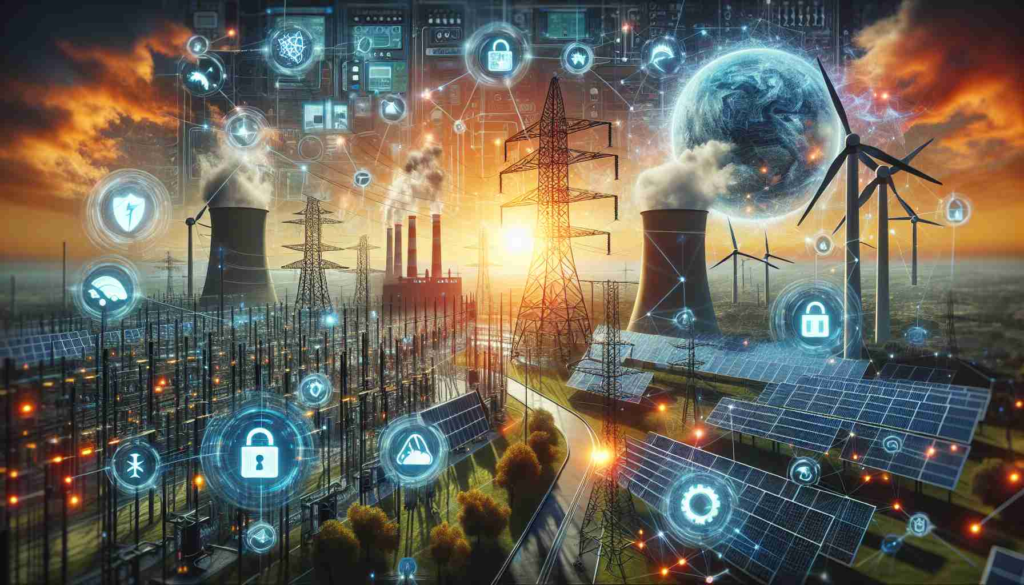
This article provides an analysis of the cyber threats facing the energy and infrastructure sector and highlights the need for stronger cybersecurity.
The energy and infrastructure sector is critical to ensuring the smooth functioning of society and is a hot spot for cybercrime. There is concern about the prevalence of email-based attacks that exploit social engineering. Particularly vulnerable are vendor email compromise (VEC) and business email compromise (BEC) attacks. These attacks rely on deceptive tactics to make requests appear legitimate. These attacks can evade traditional security systems and pose dangerous risks to critical industries.
A surprising number of companies in these sectors reported experiencing a VEC attack last year, higher than the percentage of any other industry. Similarly, BEC incidents are on the rise, demonstrating the need for stronger security measures. However, the sophisticated nature of these attacks makes common defenses such as secure email gateways increasingly inadequate and often lack the usual markers of a cyber threat. Adding to the challenge is the emergence of AI-powered tools that allow criminals to craft highly convincing phishing emails that are particularly difficult to detect.
For robust defense against these threats, businesses must adopt a multi-layered approach that combines informed human vigilance with advanced AI-driven security systems. Employees need to be educated about the subtleties of these threats, while AI can adapt to unconventional attack patterns and identify anomalies that indicate security risks. Proactive and intelligent security strategies and traditional security measures provided by AI solutions are essential to protect critical sectors from increasingly sophisticated cyber threats.
Energy and Infrastructure Cybersecurity Challenges
The importance of cybersecurity in the energy and infrastructure sector cannot be overstated. As the backbone of modern economies, any disruption can have far-reaching effects. The industry faces not only traditional hacking attempts, but also sophisticated state-sponsored attacks aimed at attacking critical infrastructure. As a result, the energy and infrastructure cybersecurity market is projected to grow significantly. Market forecasts predict a significant increase in spending on cybersecurity solutions as companies look to protect their operations from digital threats.
Market forecast
Industry analysts predict a steady increase in cybersecurity investments in these areas. As reliance on digital technology and IoT devices increases, the energy and infrastructure industries are expected to allocate more resources to protect networks and communication systems from cyber intrusions. The global cybersecurity market, which includes these sectors, is expected to reach billions of dollars within the next few years, and the compound annual growth rate (CAGR) is expected to maintain an upward trajectory.
industry issues
Despite growing threats, the energy and infrastructure sector faces several challenges in improving its cybersecurity posture. One of the main challenges is the integration of legacy systems with modern security solutions. Many parts of the infrastructure are aging and not designed with cybersecurity in mind, making them especially vulnerable to attack. Additionally, there is often a shortage of skilled cybersecurity professionals who are familiar with the unique needs of these industries. Additionally, the regulatory environment can be complex and difficult to navigate, creating an additional hurdle for businesses looking to strengthen their security posture.
Businesses and the public can refer to trusted online resources to stay up-to-date on cybersecurity trends and practices. For example, you can find valuable insights by accessing the U.S. Cybersecurity and Infrastructure Security Agency's main domain at CISA or the global cybersecurity community supported by the International Information Systems Security Certification Consortium at (ISC)². can.
As cyber threats become more sophisticated, so must our defenses. The future of the energy and infrastructure industry, and by extension society, depends on our ability to protect ourselves from future cyber challenges. With the right combination of human expertise, technological advances, and regulatory support, we can build stronger and more resilient cyber force fields for the critical systems that keep our world running.

Natalia Toczkowska is a prominent figure in digital health technology, recognized for her contributions to the advancement of telemedicine and healthcare apps. Her work focuses on developing innovative solutions that improve patient care and accessibility through technology. Her Toczkowska research and development to create user-friendly and secure digital platforms has helped increase the effectiveness of telemedicine consultations and patient monitoring. Her dedication to integrating technology in healthcare has not only improved patient outcomes, but also streamlined healthcare processes and made her a key influencer in the field of digital health innovation.


